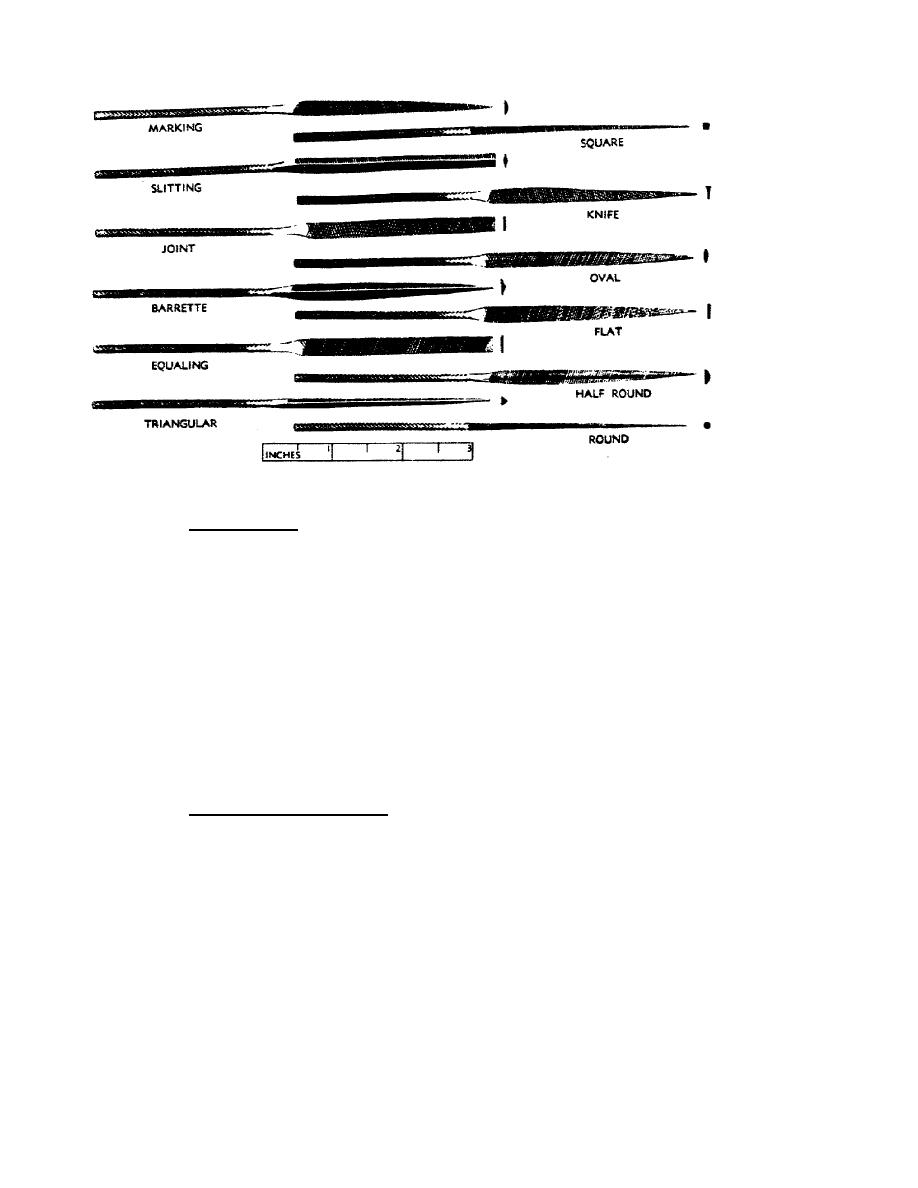
Figure 36.
Swiss pattern files.
(4) Use of files. There are thousands of kinds, cuts, and sizes of files.
This is due to the fact that there are thousands of different filing jobs, each of
which can be done better by using the right file for the job. Therein lies the
first rule on how to get the most out of files. The right file enables doing the
job properly, whereas the wrong one does not and often, in fact, ruins the work.
The right file saves time because it performs correctly, and usually faster, on the
kind of metal or work for which it was designed. The right file permits a greater
number of efficient filing strokes. Many factors enter into the selection of the
right file for the job. In general, it may be said that different files are
required to file a flat or convex surface; to file a curved or concave surface; to
file an edge; to file a notch, a slot, or a square or round hole. But these
factors can immediately become complicated by the kind of metal or other material
to be filed; the kind, shape, and hardness of the object or part to be filed; the
location, size, and character of the surface, edge, notch, slot, or hole to be
filed; the amount of metal to be removed; and the degree of smoothness or accuracy
required. All these conditions have a bearing on the kind, size, and cut of file
which will best attain a particular objective.
(5) Selecting proper file.
(a) For heavy, rough cutting, a large coarse, double cut file is best.
(b) For finishing cuts, use a second cut or smooth cut, single cut file.
(c) When working on cast iron, start with a bastard cut file and finish
with a second cut file.
(d) When filing soft metal, start with a second cut.
(e) When filing hard steel, start with a smooth cut file and finish with
a dead smooth file.
29




 Previous Page
Previous Page
